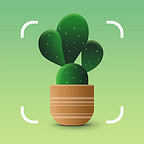All cat parents know how tough it is to keep those little explorers away from houseplants — everything can capture their interest, from a tiny succulent to a decorated Christmas tree. Not sure if that flower your pet tries to snack on is completely safe? Check out our list to learn which plants are poisonous to cats.
Lily
The exquisite lilies are gardeners’ favorites — their showy blooms and pleasant scent will impress the most discerning plant parents. Unfortunately, lilies are not the best pick for cat owners since these beautiful flowers rank first among the most cat-toxic plants. All parts of this plant are incredibly dangerous to your pet. Cats don’t even need to chew on its foliage: licking the pollen off their fur or drinking the water from a vase with freshly cut flowers may result in vomiting, diarrhea, and swelling. In the most tragic cases, pets develop fatal kidney conditions. If you think that your feline has eaten a part of this plant, don’t panic and contact the vet as soon as possible.
Dumbcane
This green beauty may look safe, but it may pose a threat to your curious pets. Dumbcanes contain calcium oxalate crystals, and if ingested, they cause swelling and irritation around the pet’s mouth, as well as vomiting. Though not lethal, this experience is highly uncomfortable and painful for cats and will definitely result in a visit to a vet. Dumbcanes are not recommended for cat owners, but if you really want to get one, place it out of your cat’s reach.
Aloe
Aloe is a popular houseplant famous for its medicinal properties: the gel obtained from its foliage is widely used to heal cuts and skin irritation. Yet, regardless of its benefits, the plant is far from being safe for cats who may try to munch on it. The stomach problems caused by aloe are usually non-fatal but may bring a lot of discomfort to your pets. To keep them safe and sound, put your aloe plants in inaccessible spots.
Kalanchoe
One of the most beloved houseplants, kalanchoe, knows how to put on a show, especially during the blooming season. Its striking flowers that come in various colors stand out against the deep green foliage. However, this beauty comes at a price — the plant causes severe discomfort to cats, inducing diarrhea, vomiting, and even heart arrhythmia.
Cyclamen
These delightful winter bloomers bring a lot of joy to their owners but not to cats. Cyclamen plants contain saponins — deadly substances that are concentrated in their roots and tubers. Nibbling on the leaves won’t lead to a severe outcome — your feline friend is likely to develop drooling and stomach problems. Consuming large amounts of the plant, especially tubers and roots, is extremely dangerous and may result in cardiac issues, seizures, and even death. Take this into account before adding cyclamen to your plant collection.
Oleander
The warmth-loving oleander is a trendy blooming shrub that is toxic to various animals — cats, dogs, sheep, horses, and goats. All parts of the plant contain cardiac glycosides that are highly toxic and affect the heart, causing convulsions and lethal heart problems in the most extreme cases. Less dangerous symptoms of oleander poisoning include drooling, diarrhea, and nausea. If you have a cat, avoid planting oleander in your garden and bringing its flowers indoors since the harmful toxins are released into the vase water.
Knowing which plants are poisonous to cats is a crucial part of being a responsible cat and plant parent. We hope that our list will help you provide your pets with the safe environment they deserve! Remember to contact your veterinarian at the first signs of plant poisoning.
